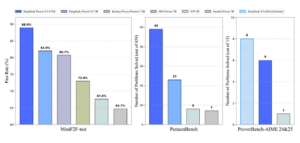Enhancing the Security of Microsoft Copilot with Reco

Enhancing Microsoft 365 Copilot Security with Reco
Microsoft 365 Copilot is designed to enhance workplace efficiency, allowing employees to perform tasks like generating reports and accessing data using simple language commands. However, this convenience introduces significant security issues. As Copilot integrates with various SaaS applications — including SharePoint, Teams, and others — the potential for sensitive data exposure increases, particularly if a user behavior is careless or an account is compromised.
Experts warn organizations not to rely solely on default security settings, as these may not provide the necessary protection. A poorly constructed prompt could let malicious actors exploit Copilot to gain unauthorized access to confidential information. To maximize the advantages while minimizing risks, robust security measures must be implemented alongside the use of Copilot.
How Reco Protects Microsoft Copilot
Reco is a SaaS Security platform that addresses the security risks associated with Microsoft 365 Copilot. Unlike traditional security tools that might ignore AI-driven interactions, Reco views Copilot as a crucial element within the SaaS ecosystem, ensuring ongoing monitoring and management. The platform analyzes Copilot’s engagement with organizational data and user activities to provide real-time insights and threat detection beyond what standard settings can offer.
Key Aspects of Reco’s Security Strategy
Reco employs a comprehensive security strategy that revolves around six critical areas designed to safeguard Copilot. Here’s a closer look:
1. Prompt Analysis
Reco focuses on scrutinizing the prompts users input into Copilot. Since Copilot can execute whatever instructions are given, it’s vital to identify potentially harmful queries early. The multi-step prompt analysis process assesses each query based on various criteria:
- User Context: Each prompt is linked to the specific user’s role. A query that might be commonplace for an IT administrator could be alarming if issued by someone in finance.
- Keyword Detection: Reco scans for sensitive terms that could indicate risky actions, such as “SSN” or phrases linked to unauthorized activities. Alerts are triggered if such keywords are detected.
- Context Analysis: Using Natural Language Processing (NLP), Reco evaluates the underlying intent behind prompts to catch subtle or cleverly disguised requests for sensitive information.
- Attack Pattern Matching: Reco leverages attack patterns from established frameworks, like MITRE ATT&CK, to recognize queries that resemble known malicious behaviors.
2. Data Exposure Management
In addition to monitoring prompts, Reco oversees Copilot’s responses to ensure data is not improperly exposed. The platform tracks file and link-sharing events to confirm they adhere to security protocols. Reco is also capable of logging interactions with sensitive data classifications.
3. Identity and Access Governance
A critical part of safeguarding Copilot involves managing user access. Reco continually evaluates the user base to identify any identity risks, including:
- Accounts with excessive permissions that could misuse Copilot
- Users without multi-factor authentication, increasing compromise risks
- Inactive or external accounts that might gain unauthorized access
- Unusual access patterns indicating potential credential theft
4. Threat Detection
Reco interprets Copilot interactions as a stream of security telemetry that can reveal abnormal behaviors associated with potential attacks. Key indicators include:
- Access from suspicious IP addresses or unusual locations
- Excessive data retrieval or off-hours usage
- Indicators of insider threats, such as unusual document downloads
- Sign-in anomalies that may signal account compromises
5. Direct Visibility
To improve visibility regarding Copilot’s usage, Reco generates a knowledge graph that illustrates user activities. This allows security teams to:
- Monitor who uses Copilot and the data they access
- Identify anomalies in access patterns
- Understand activities across the SaaS environment
- Track trends in Copilot adoption
6. SaaS-to-SaaS Risk Detection
As companies integrate Copilot with other applications, new risks may arise. Reco monitors these cross-application interactions and alerts organizations to any unauthorized or unapproved integrations.
What Reco Does Not Cover for Copilot Security
It’s essential to set realistic expectations regarding Reco’s capabilities:
- Not Data Loss Prevention: Reco does not block or filter Copilot outputs; it primarily alerts users to concerning events.
- Not Endpoint Security: Reco functions at the SaaS level and does not replace endpoint security measures.
- Not Configuration Responsibility: While Reco identifies misconfigurations, it does not modify settings directly—users must take the necessary actions through Microsoft’s tools to adjust configurations.
By understanding the framework offered by Reco to secure Microsoft 365 Copilot, organizations can maximize productivity while effectively mitigating vulnerabilities related to data exposure and unauthorized access.






